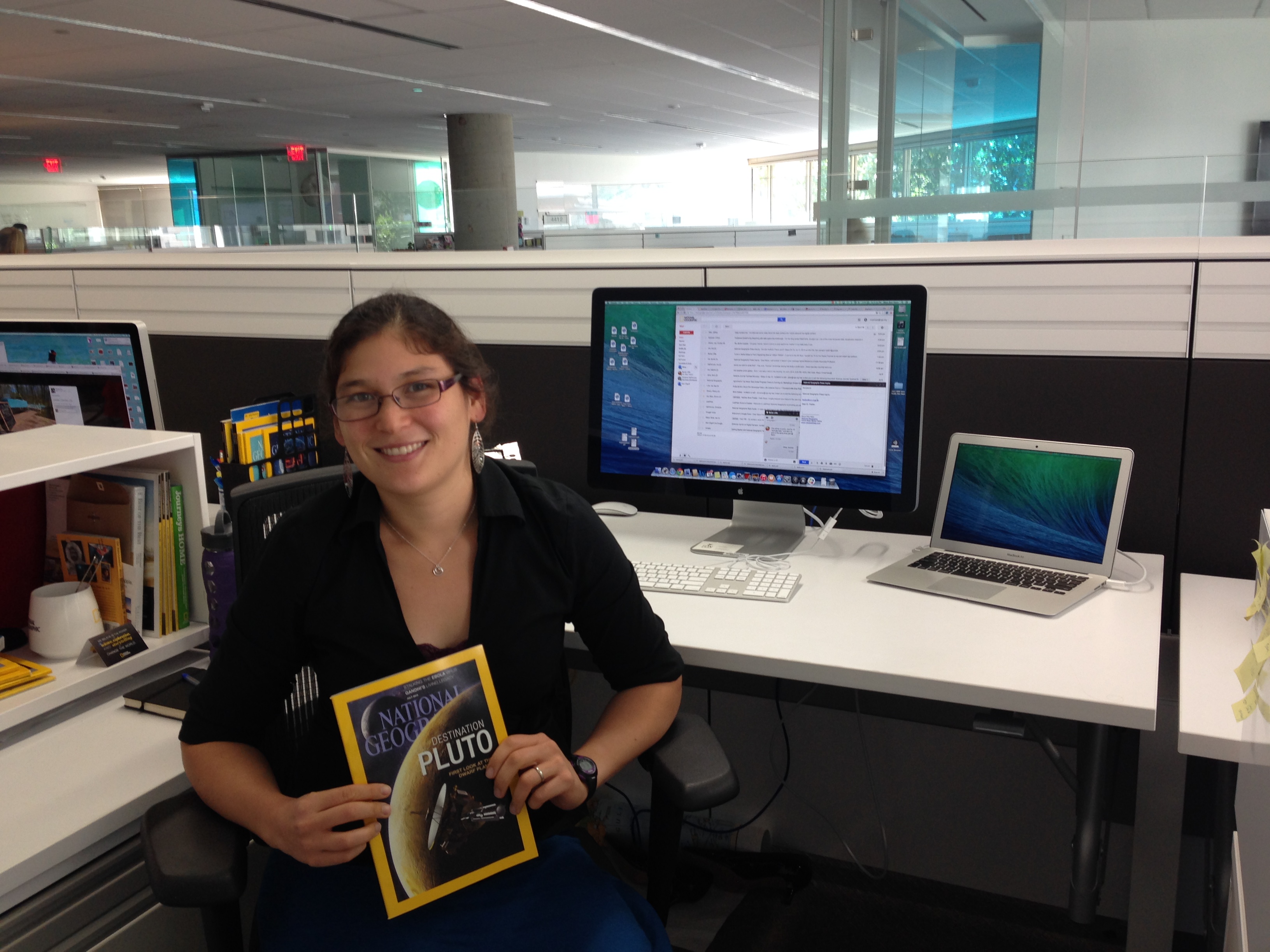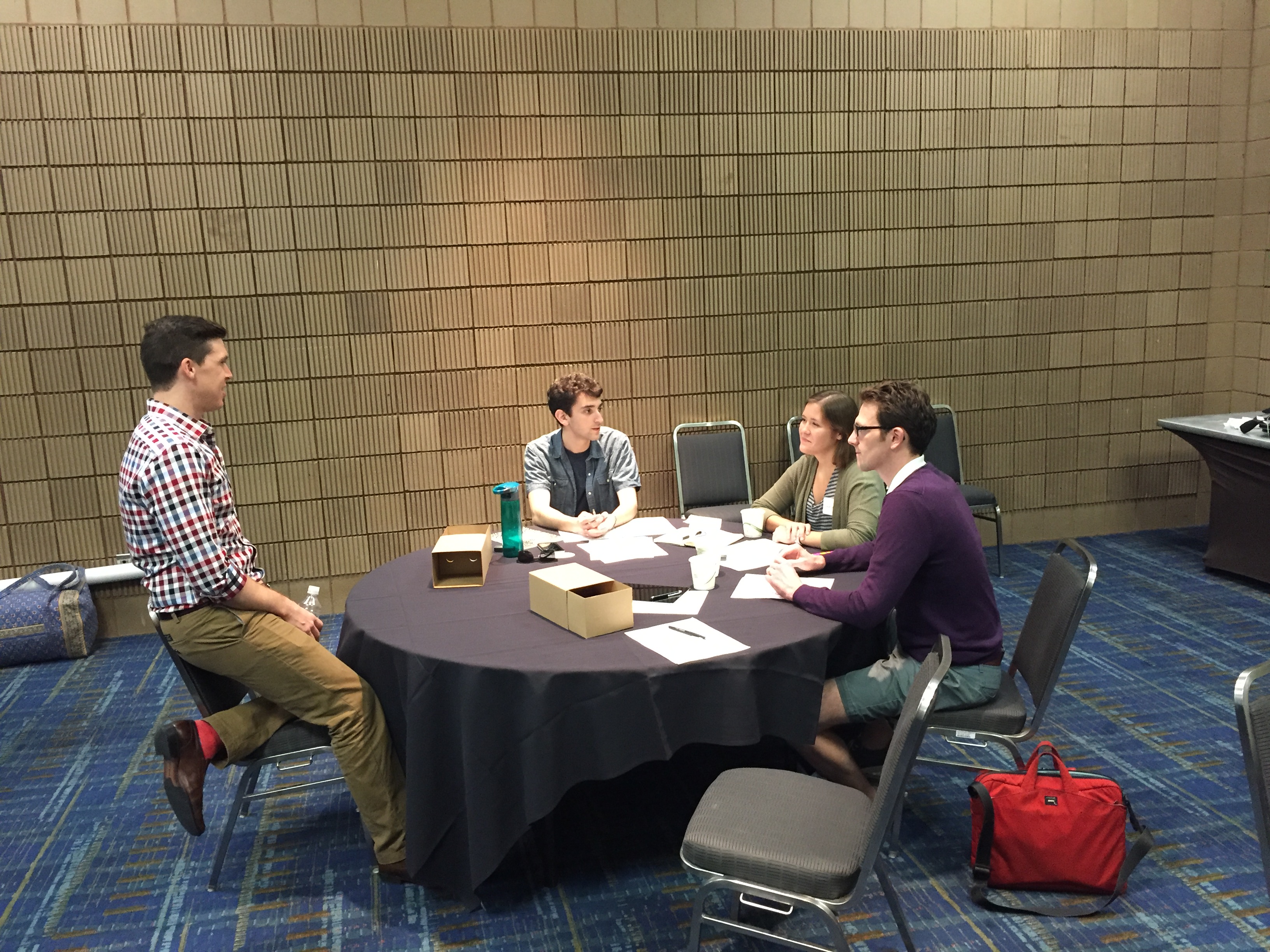8 March 2016
Transitioning out of academia
Posted by Shane Hanlon
By Shane M. Hanlon
AGU just hosted the Ocean Sciences Meeting held in New Orleans in partnership with ASLO and TOS. The meeting brought in
over 5,000 scientific attendees to the Crescent City in what was a mini preview of Fall Meeting 2017. Sharing Science was there and we held a workshop on sharing science in your community. Personally speaking, I also participated in a mentoring meetup and in a panel discussion entitled, Exploring Careers Outside of Academia. I was surprised by the number of (mainly) students, who at relatively early stages in their careers, were considering non-academic careers and was happy to answer any questions they had about my own path.
While the goal of Sharing Science is to provide scientists the tools and skills necessary to communicate with any audience, I thought it might be helpful, for those out there who don’t know if a career in academia is the path for them, to provide some examples of fellowships that are designed for students who may want to make that transition. Having received two science communication/policy fellowships myself (Knauss and Mirzayan), I understand that one of the biggest barriers to overcome is, “Where do I start?”. Below I provide a few examples (this list is by no means comprehensive) of non-academic fellowships.
 American Geophysical Union Congressional Science Fellows – With a scientific focus on earth and space sciences, the organization is actually truly devoted to science outreach and communication. Fellows can have any scientific background.
American Geophysical Union Congressional Science Fellows – With a scientific focus on earth and space sciences, the organization is actually truly devoted to science outreach and communication. Fellows can have any scientific background.
Sea Grant Knauss Science Policy Fellowship – fisheries/marine focus but anyone with a conservation-focus is welcome (I have a herpetology background). I was a Fellow and I wrote about my own experiences here and here.
Frank M. Cushing Science Policy Fellowship – provided by the Consortium for Ocean Leadership, this is for marine/fisheries scientists with a congressional interest.
Presidential Management Fellowship – with less of a science focus, PMF offers a great introduction to government inter-workings.
AAAS Science and Technology Policy Fellowships – perhaps the most well-known of this option, brings in a wider variety of scientists. Some societies coordinate with AAAS for their own fellowships such as:
- American Physical Society/American Institute of Physics Congressional Fellowship
- American Chemical Society Public Policy Fellowship.
- Geological Society of America Congressional Science Fellowship
- American Meteorological Society Congressional Science Fellowship
These are great options for a transition out of academia to see what else is out there, specifically in relation to the government. But what if you don’t know if you want to permanently leave and don’t want to dedicate at least a year to finding out? Well, there are options:
Congressional Visit Days – A number of scientific organizations sponsor congressional visits, or opportunities to take a day or two to visit with congressional members to see how science is translated into policy or legislation. This is the best option to “get your feet wet” and to get a taste of what happens here in D.C. Some options include:
- American Geophysical Union
- Science, Engineering, and Technology
- Biological and Ecological Sciences Coalition
So what about that sweet spot? A couple days may not be enough, a year or two may be too long. You may ask, “Is there anything in the middle?” Why yes, yes there is.

2015 AGU AAAS Mass Media Fellow Maya Wei-Haas
AAAS Mass Media Science & Engineering Fellows Program – This 10-week summer program places science, engineering, and mathematics students at media organizations nationwide. Fellows use their academic training as they research, write, and report today’s headlines, sharpening their abilities to communicate complex scientific issues to the public.
Christine Mirzayan Science and Technology Policy Fellowship provided by the National Academies (Mirzayan Fellowship for short) – The fellowship is 12 weeks, basically a spring semester, and for anyone on their way to (or in my case, having recently completed) their Ph.D. in some STEM field. You pick a few boards within the National Academies in which you’d be interested in working,** apply for the program, cross your fingers, and hope for the best. If selected, you make your way to D.C. for the spring and have the time of your life. The program is great and incredibly flexible.
In addition to whatever duties you have on your board, the program administrators are passionate about fellows getting the full “D.C. experience”. See an interesting hearing that you’d like to attend? Go. Wanna attend some workshop at AAAS? Go. Need a picture with Einstein? Go, though perhaps after work hours. There are also ample opportunities to work with your fellow fellows and to discuss some of the pressing issues of the day. We had discussion groups on reproducibility in science, Keystone XL, wind energy and migratory birds, mental health in grad school, and GMOs, just to name a few.The Academies are well-known and certainly helped a handful of fellows on their road to receiving AAAS fellowships. Some fellows stay in/return to D.C. after the fellowship to pursue careers in science policy, but others return to their respective institution to pursue academic careers. No matter what fellows decide after the fellowship, the skills and knowledge obtained is invaluable.
—
A career in academia isn’t for everyone. While our target audience with Sharing Science are research-oriented scientists (in academia, government, private sector, etc.), we want to help in any way that we can. If any of you reading this post have questions, especially about the Knauss or Mirzyan fellowships, or any other for that matter (we have an extensive network of peers in many of these fellowships), please don’t hesitate to contact me ([email protected]) or the Sharing Science program (sharingscience.agu.org).
–Shane M. Hanlon is an AGU Sharing Science Specialist



 The Plainspoken Scientist is the science communication blog of AGU’s Sharing Science program. With this blog, we wish to showcase creative and effective science communication via multiple mediums and modes.
The Plainspoken Scientist is the science communication blog of AGU’s Sharing Science program. With this blog, we wish to showcase creative and effective science communication via multiple mediums and modes.
The program is great